September 2024
The sculpture park is the embodiment of the life work of Gustav Vigeland. The park contains over 200 of his sculptures in granite, bronze, and wrought iron installed mainly in the period 1940-1949.
Born in 1869, Gustav Vigeland is the most celebrated sculptor in Norway.
He conceived the idea of creating an outdoor park for his sculptures in 1914, and full plans were agreed by 1931. Vigeland also convinced the City of Oslo to build him a home and studio, where he lived and worked for the rest of his life. In return, he promised to donate all his works to the city in the future and after his death.
Vigeland Park is within Frognerparken (Frogner Park), Oslo’s largest public park. Vigeland was involved in its design and planning, although he died six years before its completion in 1949.
The Bridge
The Bridge‘s 58 bronze sculptures show children, women, and men of different ages, including the iconic little boy Sinnataggen (The Angry Boy). The sculptures on the Bridge share themes of play, lust, energy, and vitalism.
Vigeland modeled these sculptures from 1925 to 1933. They were some of the first sculptures mounted in Vigeland Park in the early 1940s.
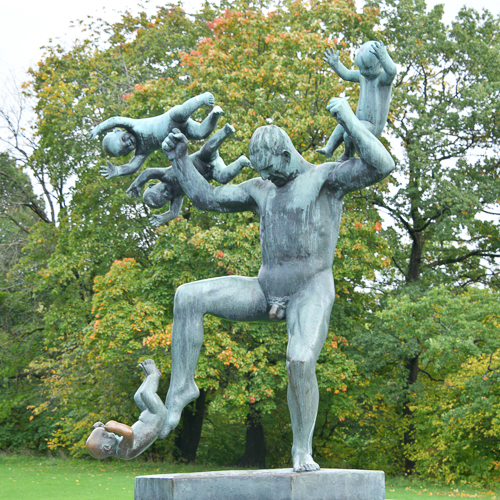
‘Man Attacked by Babies’ shows a father struggling with the responsibilities of parenthood.
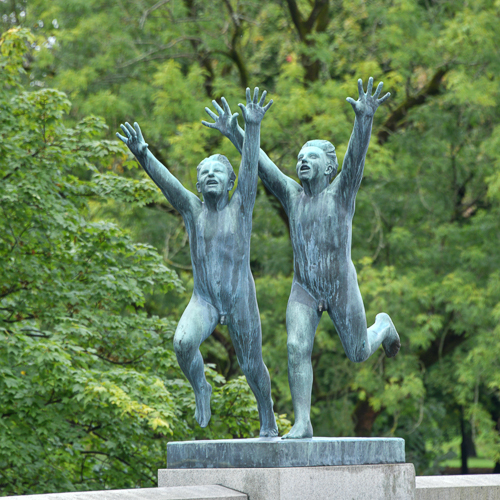 * *
* *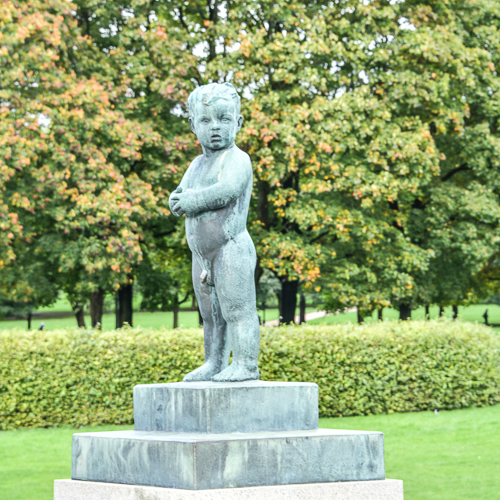 *
*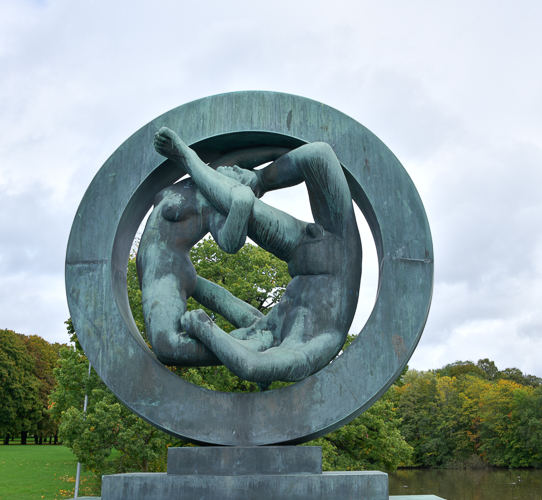 *
*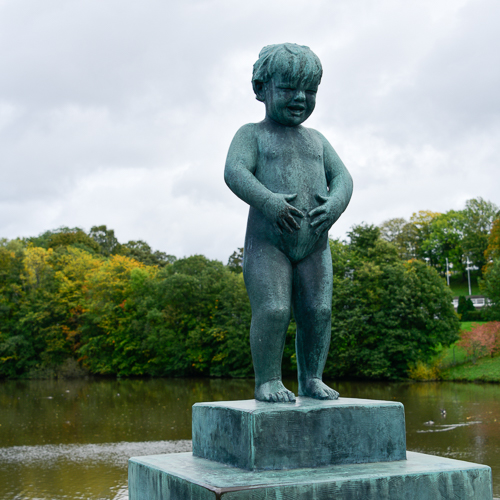
*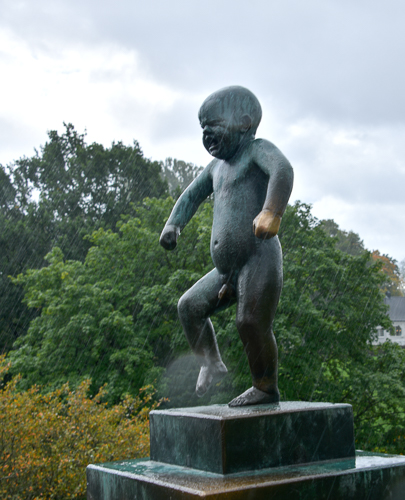 *
*
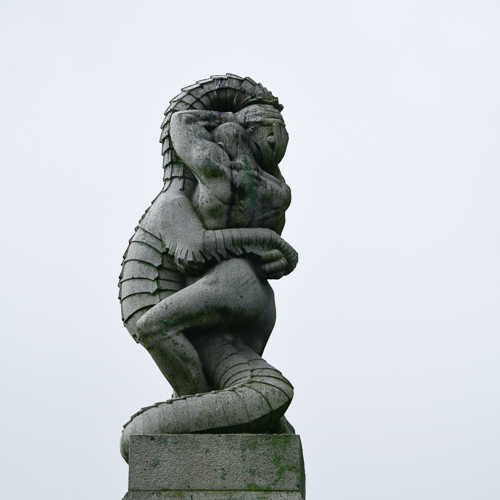
*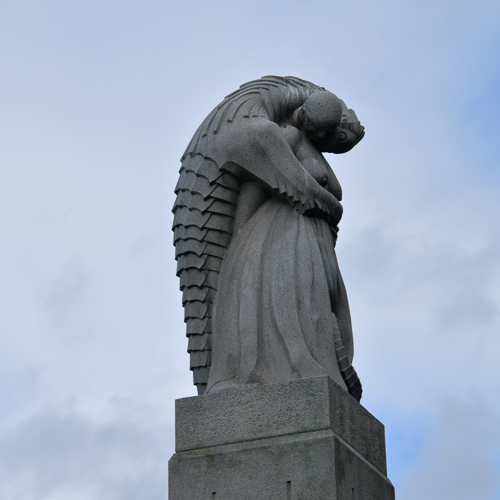
The Fountain
After walking through the promenade of sculptures, you are led to the Fountain. It was originally meant to be placed at Eidsvolls plass in front of the Parliament, but that never happened.

In the center are six men representing different ages holding up a large saucer-shaped vessel as a curtain of water flows down into an adorned basin.
The corners are decorated with “Trees of Life. representing a romantic expression of Man’s relationship to nature. They also form the setting for life’s evolving stages, stretching from childhood and adolescence through adulthood to old age and death.
 *
*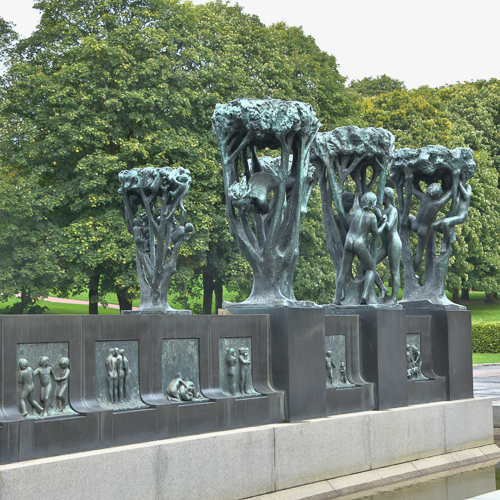 *
*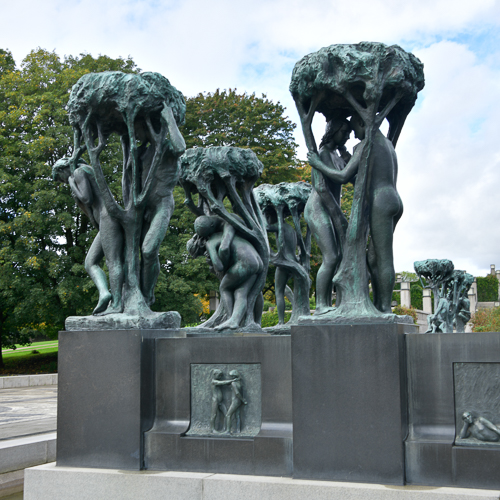
*
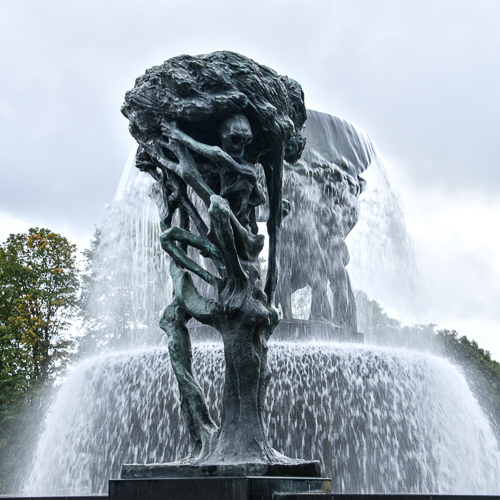
There are plaques around the face of the basin.
 *
*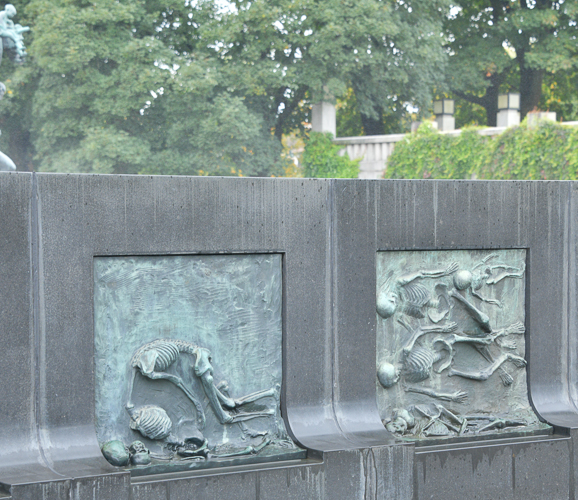
*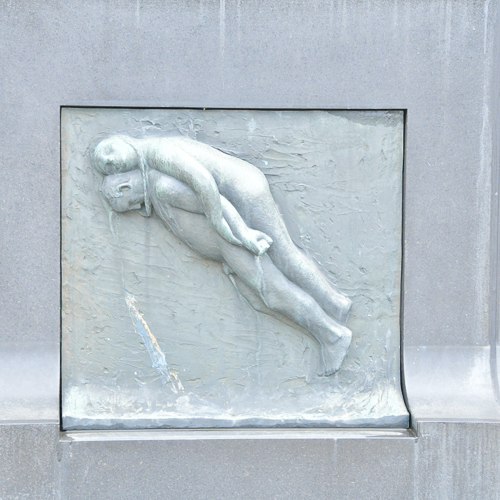
*
The Monolith
The Monolith stands at the highest point in Vigeland Park. It is carved out of one stone block, hence the name. The stone was from a quarry in Iddefjord, Norway, and transported to the park during the late 1920s.

The Monolith depicts 121 humans climbing around and clinging to each other, with children at the top. Every figure represents a different stage of life.
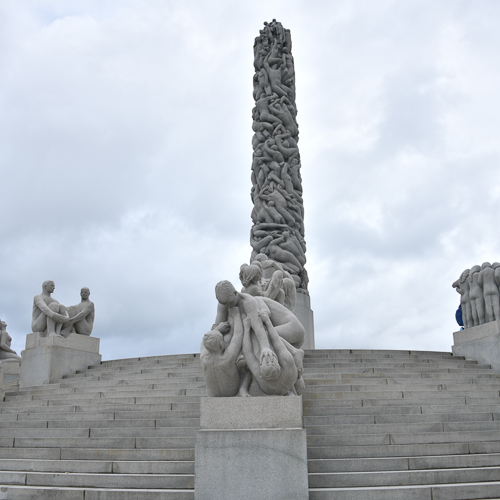
*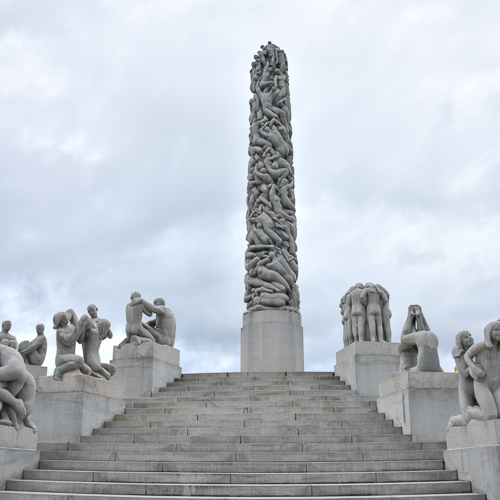
The figures are studies of the human body at every stage. They reveal the full range of human emotions, including those not usually celebrated, such as anger and violence.

*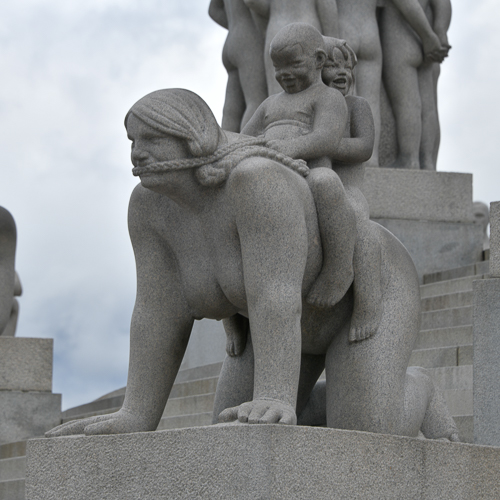
*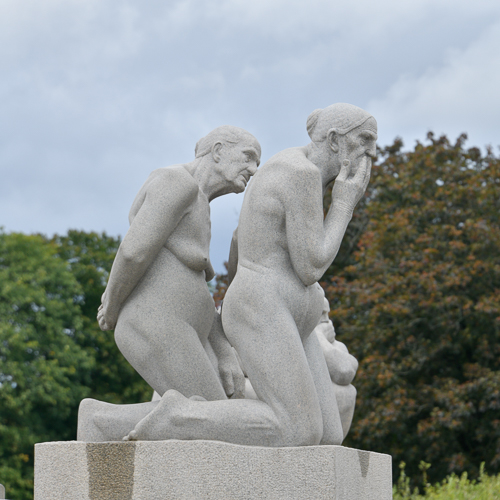
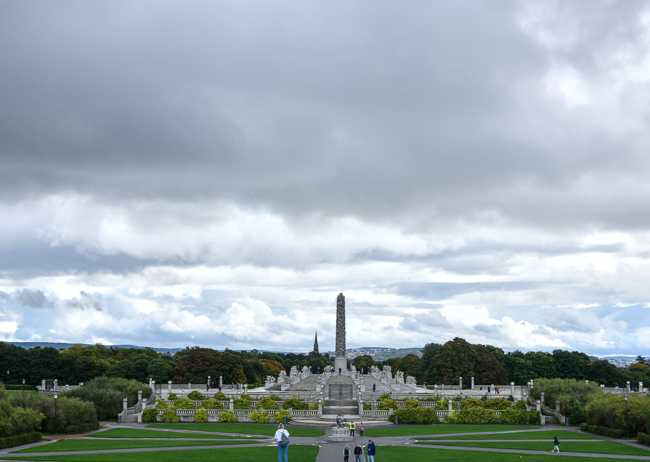
The Wheel of Life
The Wheel of Life in bronze was modeled in 1933-34 and erected in 1949.
The wheel symbolizes eternity, and here, it is designed as a rotating wreath of women, men, and children holding onto each other for all eternity. This sculpture summarizes the entire dramatic theme of the park: a sculptor’s reflections on the journey of human life from cradle to grave, through joy and sorrow, through dreams, fantasy, hope, and eternal longings.
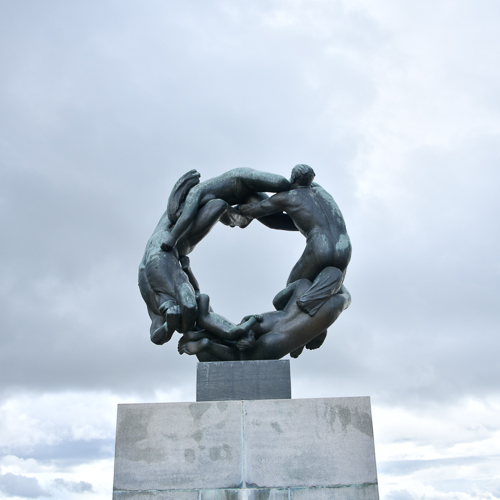
*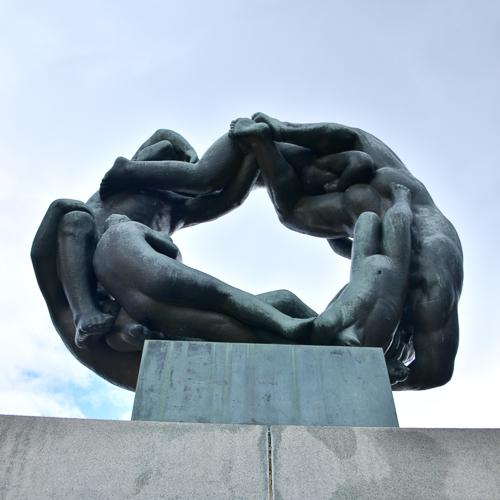 *
*
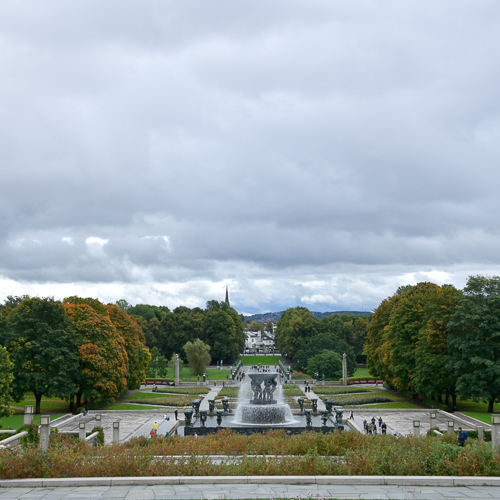
It was a day of off-and-on rain but a fascinating look at one man’s obsession.